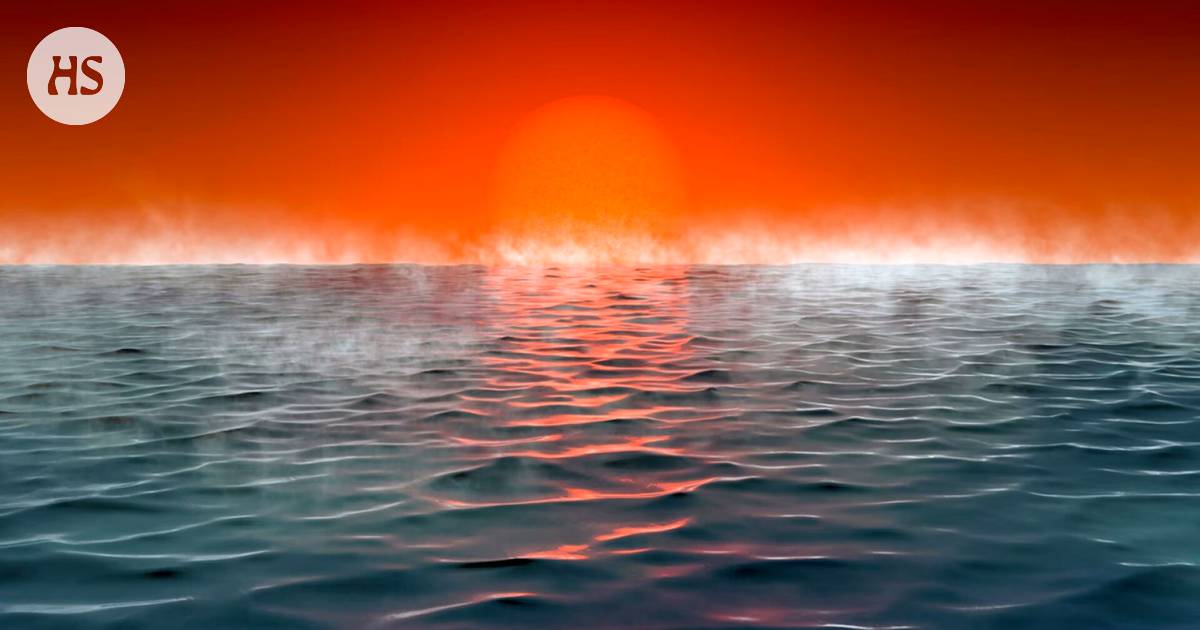The composition of the gas atmosphere of the planet TOI-270 d is known, but there are different interpretations of the surface. Webb’s gaze is precise, but it doesn’t reach the surface.
A space telescope James Webb may have discovered an oceanic exoplanet with surface water over a hundred degrees. It is possible if there is a strong pressure on the surface.
Webb found chemical compounds of water vapor, methane and carbon dioxide in the atmosphere of the exoplanet, which is about 70 light-years away from Earth.
The mass of the planet is just under five Earth masses. The diameter of the planet is about twice that of the Earth.
An exoplanet is a planet that does not orbit our own Sun. More than 5,500 of them have already been found in space, according to the US Space Administration NASA exoplanet statistics.
Cantabrigian university astronomers say the chemical composition of the observed planet’s gas atmosphere suggests that an ocean would cover the entire surface of the planet. The gas cycle would be hydrogen.
“The temperature of the ocean can be a hundred degrees Celsius or more.”
That’s what the professor who interpreted the results of Webb’s measurements said Nikku Madhusudha’s newspaper for The Guardian.
Results published tiedelehti Astronomy and Astrophysics Letters.
Webb has recently been studying more and more selected exoplanets that are considered promising for life.
The telescope captures the star’s light passing through the exoplanet’s gaseous atmosphere. The spectrum of that light provides information about which elements and compounds are in the gas atmosphere and in what proportion.
Astronomers In Canada, they also study Webb’s measurements and more of this known exoplanet under catalog name TOI–270 d.
It was already found in 2019, but now Webb turned his precise mirrors on it.
They detected the same gaseous compounds. However, the Canadian interpretation is that the planet is too hot for liquid water.
The surface temperature can rise up to 4,000 degrees. All the water would have evaporated. On top of the rocky surface there would be a very dense atmosphere of gas with hydrogen and water vapor.
The evidence for TOI-270 d’s ocean is based on the absence of ammonia. It should exist chemically in the hydrogen gas atmosphere.
Ammonia dissolves well in water, so it would be depleted from the atmosphere if there is an ocean on the surface.
One interpretation is that the exoplanet is “Hysean,” meaning a world with an ocean on top of a hydrogen gas atmosphere, Madhusudhan said.
TOI-270 d is locked in its orbit, i.e. turns the same side towards its parent star. The other side is in eternal darkness.
This produces extreme temperature variation for the planet. In the borderlands of night and day, life could still be dulled.
Read more: A harmonious planetary system was found in space
Read more: A giant mirror was found in space – the clouds of a highly reflective exoplanet are metallic
Read more: Now we can see deeper into space and further into history than ever before – the first image from the Webb telescope has been released
Correction March 11 at 10:45 am: Removed mention that the planet does not rotate on its axis. A planet orbits itself once in the same time as it orbits its parent star once.
